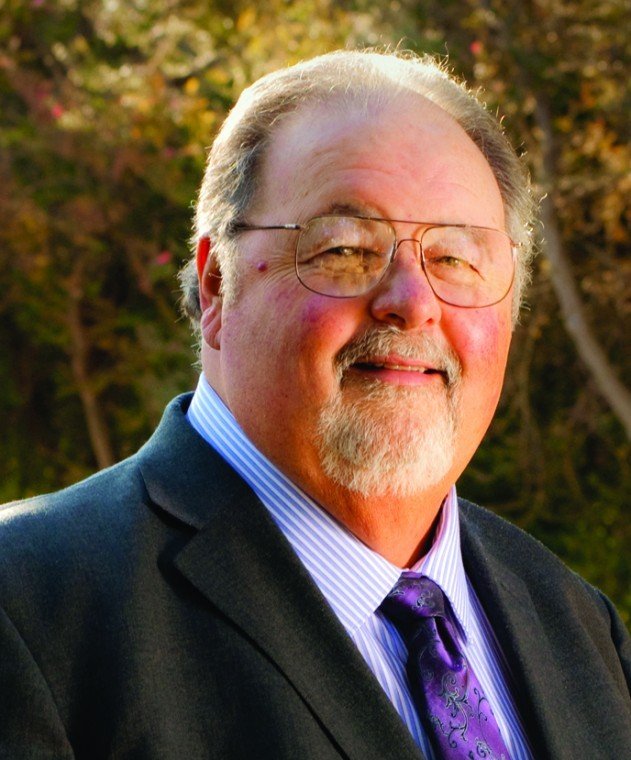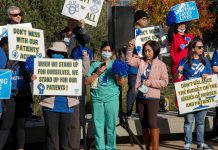Mayor Don Gage and the City are forging ahead with a proposed “Quality of Life” tax to possibly fund projects that improve safety, create recreational opportunities for the community and bolster economic revitalization and recovery.
“My goals are clear,” Gage said. “I’m willing to pay because this is my home. I’ve lived here all my life and was born here. I want to see it a beautiful city. I want to see it with amenities for children, adults and older people. In order to do that, you have to sometimes pay for it. This is not my problem, it’s our problem.”
A consulting firm hired by the City this summer is wrapping up a phone survey aimed at gauging support for how the measure could be levied. The three options to generate new tax revenue are a sales tax (which requires a simple majority, or 51 percent to pass); an ad valorem tax (a tax based on the value of real estate or personal property and requires a two-thirds vote to pass); or a parcel tax (which also requires a two-thirds vote to pass).
Gage said he has no preference on what kind of funding mechanism the City uses to levy the Quality of Life tax, if it passes.
Currently, Gilroy’s sales tax rests at 8.75 percent. A quarter-cent tax hike could grab $3 million annually; a half-cent tax could hit $5.9 million and a full percent increase could garner $11.9 million, according to Gilroy Finance Director Christine Turner.
The results of the phone survey are expected to be presented next month to City Council.
The projected $25 to $35 million tax measure – which Gage wants to put before voters on the November 2014 ballot – will allow the City in one fell swoop to fund a variety of capital improvement projects and fix problems Gage says have plagued Gilroy for more than a quarter century.
“When I was the mayor the first time [from 1991 to 1997], people were complaining about the downtown,” Gage said. “It’s 20 years later and they’re still complaining about the downtown. It’s time to fix it.”
Some potential projects topping the City’s to-do list include improving parks and playgrounds ($5 million); expanding parking opportunities in the downtown area (one example is a proposed $5.7 million expenditure to expand the Civic Center parking area); and putting an end to Gilroy’s 27-year-long problem stemming from downtown’s bevy of unreinforced masonry buildings, or edifices deemed structurally unfit to survive a high-magnitude earthquake.
Currently there are 16 URMs sitting empty, according to local developer and downtown advocate Gary Walton.
Gage says the tax will help address this issue through the purchase or demolition of the buildings, although he’d prefer to see the buildings restored rather than demolished.
“I’m all for quality of life but it’s a bit early to take a position on [the measure],” Walton said, when asked for his two cents. “Where is the money going to go? We really don’t know enough about it yet.”
Other potential projects on the table for discussion by City Council include:
-Construction of a water feature at the Gilroy Gardens amusement park ($10 million).
-Building a football stadium at Christopher High School (although a grassroots, parent-run campaign to make this happen has already kicked off).
-Building up to four baseball diamonds at the Gilroy Sports Park, $14.4 million).
-Improving local roads and establishing a $5 million, six-year roads maintenance plan.
-Repairing and reconstructing sidewalks ($8 million).
-Providing additional upgrades to downtown’s Interim Center for the Arts building at a cost of $1 million (Gage said existing plans to build a new arts center would come in at $23 million).
The current step the City is engaged in, according to Gage, is asking residents “what it is you want and what would you like to see?”
The City will base its decision on what kind of tax to possibly levy based on feedback from Oakland-based Lew Edwards Group, the consulting firm hired in July to assist in outreach, feasibility analysis, polling and results. This first phase could cost the City in the ballpark of $36,500, which will be sourced from the general fund, according to Turner.
“I think that our citizens want a lot of things done in Gilroy, particularly in our downtown, and obviously it takes money to do that,” said Councilmember Terri Aulman. “We do need to do some work on our vision for the City, especially for downtown. The only way to get money is from the taxpayers and ask if they support what we’re trying to do. If they say ‘yes, it’s worth it,’ then we have something to go on. If they say ‘not right now,’ that’s fine, too.”
Councilmember Dion Bracco, who cast the lone dissenting vote during Council’s 6-1 motion on July 1 to hire Lew Edwards Group, said it was “too early to tell” if the Quality of Life tax would be the right thing for Gilroy.
Mayor Pro Tempore Perry Woodward said there are a variety of projects on the table he’d like to see completed.
“If the support of the community is there, I say let’s do it,” Woodward added. “I am cautiously optimistic about the polling data but I’d like to see what the community thinks.”
Gage said Gilroy’s sales tax revenue is still down from 2007, when $14.7 million in tax revenue filled city coffers. He said the City expects $13.3 million in sales tax revenue this year.
“We have neighborhood parks that need to be upgraded,” Gage said. “There are all kinds of problems that are below the line when it comes to running the City.”
He also stressed that, unlike Morgan Hill, Gilroy never had a redevelopment agency – although Gov. Jerry Brown shut down RDAs in approximately 400 California cities last year, including Morgan Hill.
“People are asking: ‘Why don’t we have a downtown that looks like Morgan Hill?’” Gage said. “Well, Morgan Hill had over $200 million in redevelopment agency money that they used to fix the downtown, build their aquatic center and build their community center. We’ve had to do it with whatever sales tax we garner up.”
The next phase, once the preliminary polling is complete within a month or so, will involve asking Gilroy residents which projects they deem significant and if they will, in general, support the Quality of Life tax measure. Gage says residents can also expect to see community meetings at a yet undetermined date to help City staff garner feedback on prioritizing projects.
According to Gage, all the potential projects could be completed in three to five years if the tax measure passes. If the measure doesn’t pass, it won’t be put before voters again, according to Gage.
“I’m only going to ask once,” he said.
-$149,800: Estimated minimum cost of placing the Quality of Life tax measure on the November 2014 ballot, along with associated outreach and research efforts. This includes:
-An estimated $36,500 for Oakland-based consulting firm Lew Edwards Group to assist the City in outreach, feasibility analysis, polling and results.
-$54,300: Cost of placing the measure on the ballot.
-$59,000 and $90,000: Additional costs associated with a consulting firm, including voter follow-up, preparing and sending out informational mailings.
Source: The City of Gilroy; Santa Clara County Registrar of Voters














